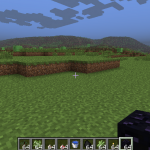
By Risa Gluskin
Everyone seems to have an opinion on credit recovery. I’ll stick to my experience.
I’ve been teaching credit recovery for about five years. Wow, is it difficult! Last semester, I had students doing grade 9, 10, and 11 English, ESL C and D and Canadian History. Please note: I am not an English teacher. Two years ago, I recovered grade 12 Food and Nutrition, grade 12 Law, grade 12 English, ESL B, and even a bit of grade 11 college Math.
Given the nature of the students that I select for credit recovery, ones who are vulnerable in many ways, not just short a credit here or there, massive amounts of patience are required. Many of us know that credit recovery sometimes means an empty or nearly empty classroom. There’s a lot of waiting around for students to decide to come. When they do decide to show up, the welcome can’t be all about “where were you?” It has to be “so glad you’re here.” I sometimes throw “finally” in there, too, because I’m human. However, an increased level of patience has sunk into my regular classroom teaching. Where I used to be quite huffy about kids missing a few classes in a row, now I am more likely to calmly see it as challenge to try to master. After all, I want them to stay. We need them to stay in our subject area.
In recovering credits, I jump from person to person on a needs-driven basis. The weakest get the most attention. Through this, I’ve learned a lot more about my students as individuals. Some of my findings have been shocking, such as incredibly weak reading comprehension abilities. In those kids, I already knew they were weak, but only in an abstract sense. In sitting and reading with them, questioning them as needed, I’ve been able to note their minimal vocabularies and tendency to skip over the significance of punctuation. I take this with me into the history classroom where reading can unlock invaluable discoveries. What I should be doing with my history students – something I’m not particularly great at – is sitting down and spending time with the weak readers. I tend to float around and listen to everyone’s ideas while they’re inquiring in groups.
Credit recovery takes me out of my comfort zone. After two decades of teaching world history classes, it’s easy for me to feel comfortable (though I do switch things up a lot every year). Since taking on the credit recovery portfolio, I have gotten much more used to that uneasy feeling of not knowing what’s going to happen next. It makes me more flexible. I feel I can persevere more. Teaching in today’s environment, especially in our subject areas which are constantly threatened, requires ingenuity. We have to build those personal relationships starting in grades 9 and 10 to get the kids coming back for more. If they perceive us as harsh and inflexible, they are not going to return for our amazing lessons in history, politics, law, economics, etc.
Three times I’ve had the privilege of team teaching in credit recovery. Collegiality has taught me some new tricks. Sharing has opened my eyes to new perspectives. Being jointly responsible for a group of learners, especially with young teachers, has reminded me that there’s not just one way to do things. Seeing how others diffuse tension has been particularly revealing for me. We get used to our old tricks in our subject areas. It wouldn’t hurt if we pooled our ideas with teachers in other subject areas to attract a wider variety of students.
Individualization – the absolute key to success in credit recovery – is very hard to apply in a regular classroom setting. The biggest issue is scale. In a small class environment such as credit recovery it’s manageable to have eight students doing eight different things. It’s much harder with 25 or 30 (or more). I’ve done it in ESL-sheltered history class but I find it hard to manage in a regular history class. I’ve been to wonderful workshops where teachers of world history talk about allowing their students to guide their own learning through self-discovery. I don’t know if I’ll ever get there (or if I want to go that extreme) but I will try not to be so fast to shut down someone’s idea for a topic that I hadn’t thought of.
Most teachers are very kind and willing to share their materials with the credit recovery person. Not all, but most. I always adapt what I get from them to personalize for the kids, but I really benefit from my colleagues’ readiness to share. There’s a tonne to be learned from this as we all work in departments and teams. We are going to have to work together more creatively to save our courses from the chopping block in this increasingly tense educational environment.
Teaching credit recovery has put me in a privileged position, one that can cross over to fortify my skills as a history teacher.

